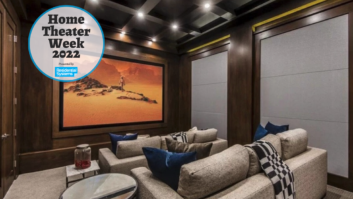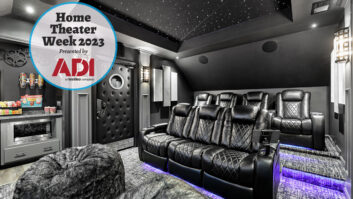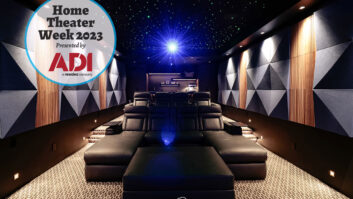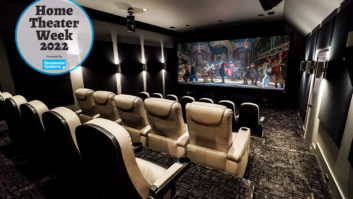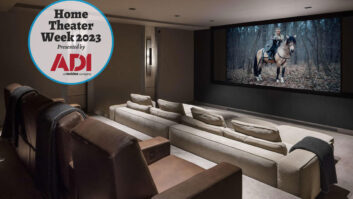A little while ago, I shared my belief that the mid-market for residential represents an untapped opportunity, and is not — as some have speculated — disappearing. Using the definition of “mid-market” from CEDIA’s Integrated Home Market Analysis — “homes with an above average sales price for their location, but not within the more elite ‘luxury’ category” — I claimed that integrators could score more jobs by getting creative with their product mix and embracing changes in the ways people use their homes brought on by the pandemic.
After a recent conversation with one of Vanco’s U.K.-based distributor (who also has an integration department), I’ve got to say: It feels great to be right.
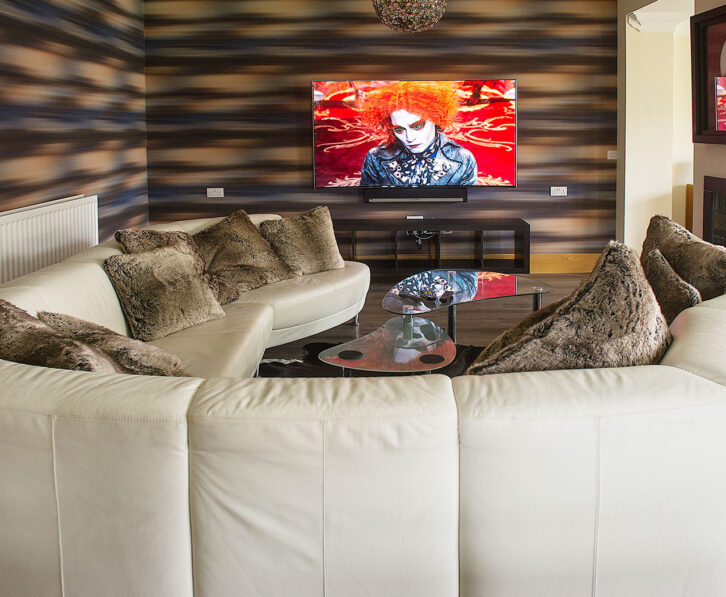
Between rising inflation rates, re-opening offices and entertainment venues, and recession fears, the residential market feels like it’s been waiting for the other shoe to drop. Would consumers who were spending less time at home, or worried about the economic outlook, stop investing in home improvements? In particular, would the home theater market, which experienced such a strong pandemic boom, slow down dramatically?
“We are not seeing this trend at all. In fact, the U.K. market seems to have maintained its love for bringing the cinema home,” says Dave Wilson, director at Dizzyfish Installations. “Home theater’s still as popular as ever. This has led to a number of AV companies in the U.K. actually rebranding as home cinema companies, as they know it’s what they do best and would rather focus on that target market for branding, advertising, and job focus. The potential here is that big.”
Dizzyfish sees the continued growth of the home theater market as a long-term effect of the pandemic. The quality of available streaming content skyrocketed during lockdown and remains high: new movies are available at home either same-day or after a negligible release window, and the production values of prestige TV fare like The Last of Us and The Mandalorian have met and surpassed much of what we see on the big screen. Second, people are placing more value on time spent at home — particularly time with their families. Even in mid-market homes with limited space, that’s worth its own dedicated room.
“When was the last time you saw a Disney corporation film released in the cinema? Why not bring that experience home in an affordable way that creates a dedicated home theater experience, increasing the value of the space tenfold,” says Wilson. “We aim to create spaces that draw people and families away from their individual phones and into a shared experience. We also all live incredibly busy lives and a room like that is a focal point and helps you preserve family time, even with teenagers. Your house becomes the place where they and their friends want to hang out. It’s also a great place for gaming, film night, or sports events.”
Still, dedicated home theater rooms in mid-market homes? In this economy? Dizzyfish has created a steady stream of revenue by being open to mid-market jobs: their average cinema room is £6K to £12K. That’s less than 25 percent of the cost of the average professional integration project in the U.K., which CEDIA’s most recent Integrated Home Market Analysis pegged at £33K.
Dizzyfish and Vanco’s success is rooted in the belief that there’s a right product mix for every budget: it’s possible to create an immersive theatrical experience without laying down the purchase price of a new Mercedes. He relies on Vanco’s Beale Street line for many mid-market projects, citing both its audiophile legacy and its practicality for this type of space.
“With Beale Street, we like to say that you can ‘hear the history,’” says Wilson. “These speakers have an excellent range for home cinema projects, and the in-ceiling subwoofer is a particularly nice addition for clearing floor space.” Especially in mid-market homes where space is at a premium, installed solutions that don’t clutter the space are essential — and Beale Street’s patented Sonic Vortex enclosures mean you can install even a subwoofer without fear of bleed-through to an adjacent space.
With products like Beale Street, executing a mid-market home theater is possible, but is it profitable? “There is a place for integrators who prefer to do fewer, larger jobs annually, and there are integrators out there who do every job to the topmost CEDIA-award level,” says Wilson. “However, this strategy is incredibly bespoke and misses a huge swathe of the population who want the experience but at a more accessible budget. They want the cinema experience for the feeling it creates — we just have to operate within their financial, spatial, and lifestyle limits.
“There is a certain philosophy from elements of the industry that if a client is not willing to invest £30K to £40K in a cinema room, then it’s not worth doing. In our view, this is incredibly short-sited and hits a very narrow market. Yes, there is a place for those jobs, and Dizzyfish has their fair share, but there is also a huge potential for the everyday home theater experience,” says Wilson. “In all honesty, that £40K job will look amazing, granted — but it’s going to take two to three weeks of work, versus a smaller project that will take two to three days. Plus, the £40K client is going to pick up the phone every time there’s the slightest issue with the system. With that two-day project, you very rarely get a call, and if you do it’s a genuine failure or issue.”
There’s another risk to leaving those mid-market jobs on the table: losing smart home market share to other trades, who persuade the client that whatever they source online will do the job. Integrators are experts: the industry should use our expertise to cast the net wide and help clients within their budgets and expectations.
“As a distributor, our Beale Street integrators are a healthy mix of audio/video engineers who know their trade and electricians, who are always asked to do this work and want to better themselves to have the expertise and backup to say yes with confidence,” says Wilson. “We provide anyone who uses Dizztribution with design support, cable recommendations, plans, and stock thoughts to enable them to execute the smaller projects that some integrators won’t touch.”
Do you want the average homeowner to think of home theaters, created by a professional as being out of their reach financially with no other option? Is this territory you’re willing to cede to other contractors and trades, or ground your company should fight to hold? It is entirely possible to make these small jobs profitable in part by partnering with distributors of mid-level budget, quality products for design support, providing an extra “pair of eyes” on the project, and eliminating project labor hours that integrators regularly under-charge for. You can do the same.
Even as the luxury home theater market inches toward saturation, there’s volume to be done in the mid-market. Integrators with strong distribution partnerships and a varied product mix don’t have to be afraid of that volume. By working within budget and space constraints, they can execute profitable, lean home theater projects that still offer immersive experiences the client will love.
Dizzyfish and Dizztribution cover all Vanco and Beale Street products in the U.K. territory. You can find them at shop.dizzyfish.net.
